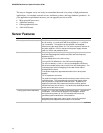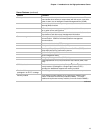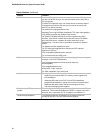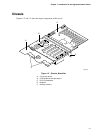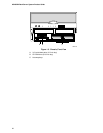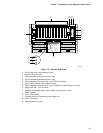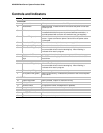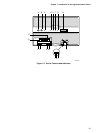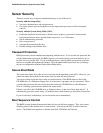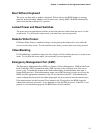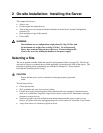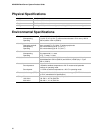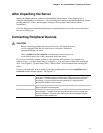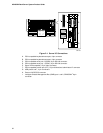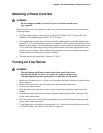AC450NX Rack Server System Product Guide
26
Server Security
There are several ways to prevent unauthorized entry or use of the server.
Security with the Setup utility:
• Set server administrative and user passwords.
• Set secure mode to prevent keyboard or mouse input and to prevent use of the front panel
controls.
Security with the System Setup Utility (SSU):
• Enable the keyboard lockout timer so that the server requires a password to reactivate the
keyboard and mouse after a specified time-out period—1 to 128 minutes.
• Set an administrative password.
• Set a user password.
• Activate the secure mode hot-key.
• Disable writing to the diskette drive.
Password Protection
BIOS passwords prevent unauthorized tampering with the server. If you set the user password, but
not the administrative password, the BIOS requires you to enter the user password before you can
boot the server or run the SSU. If you set both passwords, entering either password lets you boot
the server or enable the keyboard and mouse. Only the administrative password lets you change
the server configuration with the flash-resident Setup utility.
Secure Boot Mode
The secure boot mode allows the server to boot and run the operating system (OS). However, you
cannot use either the keyboard or the mouse until you enter the user password.
You can use Setup to put the server in the secure boot mode. If the BIOS detects a disk in the
CD-ROM drive or a diskette in floppy drive A at boot time, it prompts you for a password. When
you enter the password, the server boots from the disk in the CD-ROM drive or the diskette in
drive A. Entering a password also disables the secure mode.
If there is no disk in the CD-ROM drive or diskette in drive A, the server boots from drive C. It
automatically goes into secure mode. All enabled secure mode features go into effect at boot time.
If you set a hot-key combination, you can secure the server immediately.
Boot Sequence Control
The BIOS security features determine the boot devices and the boot sequence. They also control
disabling writes to the diskette drive in secure mode. You can use the SSU to select each boot
device. The default boot sequence is diskette, hard disk, CD-ROM, and Network.



